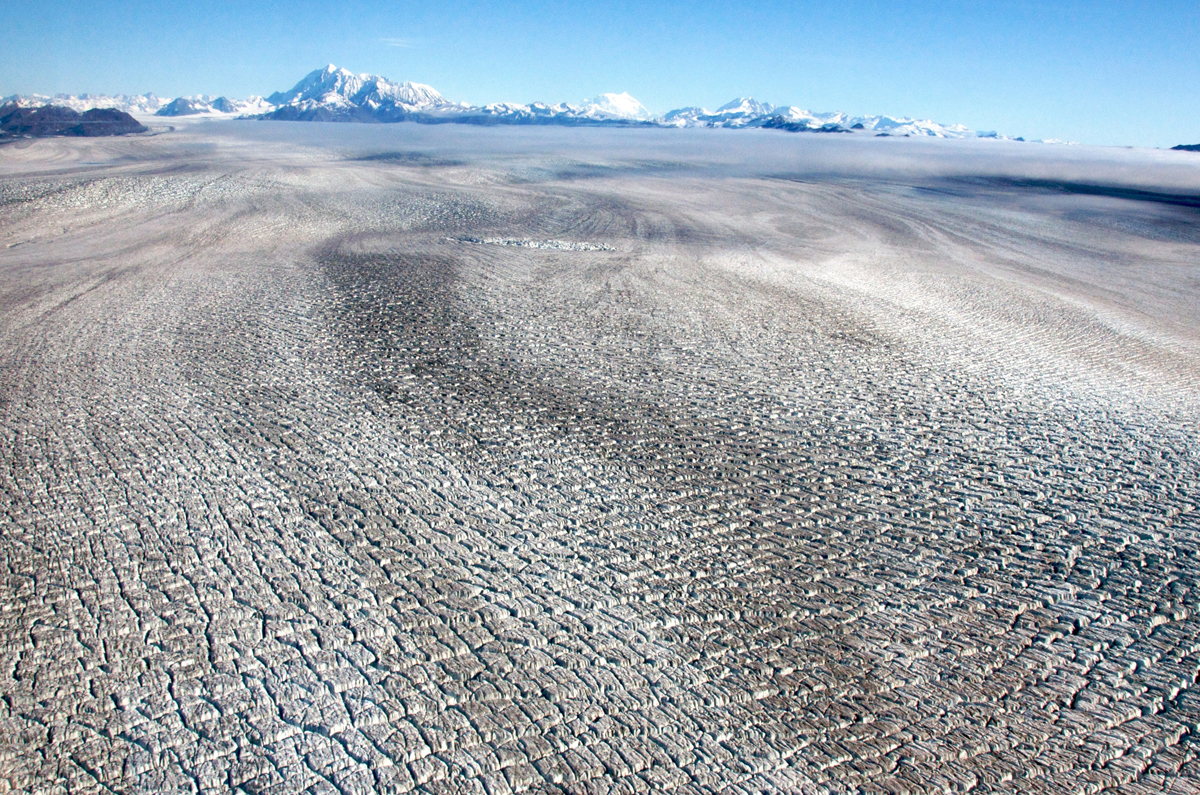
Once again, news of the world from San Francisco
SAN FRANCISCO — For the thirteenth straight year, I’m happy to be spending one week of December here, at the Fall Meeting of the American Geophysical Union, where more than 15,000 scientists gather for a week to discuss the latest news of the world.
Here are a few items from the first two days:
Bering Glacier has stopped its rush: Alaska’s largest glacier, located near the hinge where Southeast Alaska connects to Southcentral Alaska, may have stopped surging. Bruce Molnia of the U.S. Geological Survey carried to the conference a satellite image of the glacier from one week ago. “I’m not going to say (the surge) is over, but the velocity is close to zero,” Molnia said in the Moscone Center. Alaska has a handful of glaciers that start to move relatively fast after periods of hardly moving at all. These surging glaciers are not growing glaciers — instead they transfer large amounts of their ice from one section to another all of a sudden, and then they slow down again. Scientists noticed a lot of action one year ago, when glaciologist Chris Larsen announced at this meeting that the surge had completed a trip downglacier, expressing its movement by cracking up into crevasses where its tongue enters Vitus Lake. Bering Glacier was also quite active in early 2011, Molnia said. “It advanced about (60 feet) per day in January and then slowed to about (45 feet) per day in June,” he said. But the latest satellite imagery showed that its tongue seemed to be retreating, and other parts of the glacier he saw through the clouds were smooth rather than cracked up. When Molnia visited the glacier in summer 2011, he noticed crevasses 120 feet across and 300 feet deep, indicative that the surge was then quite active. “They were gigantic,” he said.
Voyager spacecraft is 11 billion miles from home: Launched in 1977, the Voyager 1 spacecraft is still communicating with Earth, even as it appears to have left our solar system. The 1,592-pound probe, which along with its sophisticated instruments carries a disc with recordings of a baby crying, whale songs and Mozart, is the farthest manmade thing from Earth. Eighty-four-year-old Eugene Parker, who in 1958 described the solar wind that Voyager appears to have just outrun, spoke at a press conference on the subject. “It’s been a long journey with a lot of clever scientific interpretation along the way,” he said of the spacecraft that has power to keep its instruments functioning until 2020. “We’ll all be sitting around holding our breath waiting for the next surprise. To me, it’s been constant entertainment . . . Nature tends to be much more creative than our own minds.”
Nothing compares to knowledge when tsunamis strike: During one of several press conferences on the world’s most destructive geologic event in 2011 — the March 11 earthquake and tsunami off the east coast of Japan — Costas Sanolakis said “public education and preparedness is the only thing that worked” to save lives. Sanolakis, of the Hellenic Center of Marine Research in Greece and the University of Southern California, is part of an international group of scientists who travel wherever a devastating tsunami hits. Expensive infrastructure isn’t always effective, he said. He showed images of a breakwater off the coast of a Japan town that cost $1.6 billion to build but did little to deflect the tsunami, and a “tsunami forest” of pines that had been planted in a vulnerable village. The tsunami reduced the forest to one tree. The researcher also pointed out that about 10 percent of people within the reach of the Japan tsunami died, compared to 90 percent in Banda Aceh, Indonesia, during the 2004 tsunami. Sanolakis said more people in Japan survived because more knew what a tsunami was and where to evacuate in the few minutes of warning they had.
This column is provided as a public service by the Geophysical Institute, University of Alaska Fairbanks, in cooperation with the UAF research community. Ned Rozell is a science writer at the institute.





